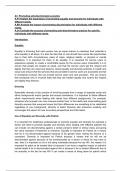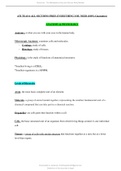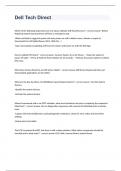Samenvatting
Summary Introduction to Biomedical Sciences Notes for year 1 ()
IBMS , Introduction To Biomedical Sciences Notes. I got a8.6 in the exams with these notes. It has everything needed from WG and lectures. I didn't even need the lecture slides and the videos to revise. It was written in September- October 2023 (Period 1) for academic year .
[Meer zien]













